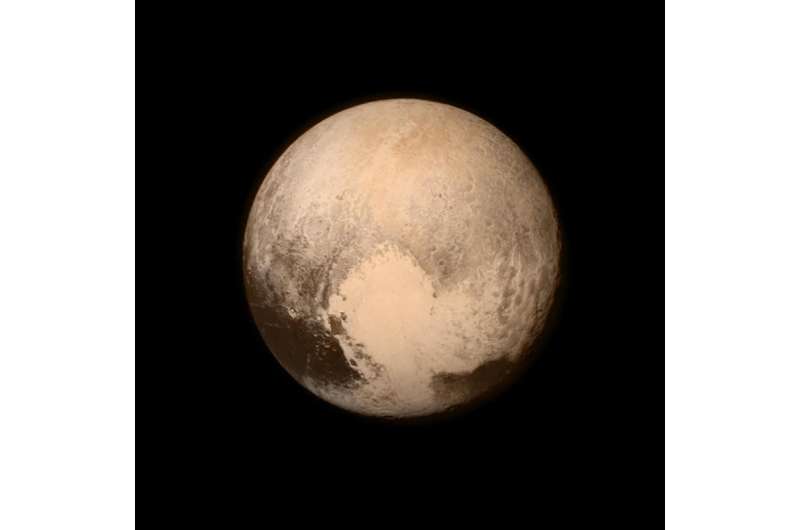May 30, 2019 report
Ammonia detected on the surface of Pluto, hints at subterranean water

A team of researchers affiliated with several institutions in the U.S. and one in France has found evidence of ammonia on the surface of Pluto. In their paper published in the journal Science Advances, the group describes their finding and what it might have revealed about the dwarf planet.
New Horizons is an interplanetary space probe that was launched by NASA in 2006—its primary mission was to fly by Pluto to learn more about the distant dwarf planet. Its secondary mission was to study Kuiper belt objects. After launch, the probe flew close to Jupiter and then went into hibernation mode until it arrived at Pluto in 2015. The probe remained in the vicinity of Pluto until the end of 2016. In this new effort, the researchers have been studying data sent back from the probe during its Pluto flyby.
The researchers focused on a part of Pluto's surface known as Virgil Fossa—an area around a large crack in the surface. Prior research has suggested the crack was the result of volcanic activity. The researchers chose to focus on the site because its reddish-brown color hinted at the possible presence of ammonia on the surface—a rarity in planetary research. Ammonia does not last long on the surface of planetary bodies because it is easily broken down by cosmic rays and ultraviolet light. Data from New Horizons provided a near-infrared spectrum of the surface at a resolution of 2,700 meters per pixel, showing some water ice on the surface and some ammonia.
Ammonia on the surface of Pluto suggests the dwarf planet likely harbors liquid water beneath its surface due to cryovolcanism, in which water mixed with ammonia was either blasted or pushed from the crack onto the surrounding area. The spacing of the ice and ammonia suggested it might also have been pushed through several vents in the region. And because of ammonia's nature, it could not have been there very long in geological terms—perhaps as recently as a few million years. The researchers note that despite a surface temperature of -230°C, it is possible for Pluto to contain subsurface water because of internal heat generated by radioactive decay of its core.
More information: C. M. Dalle Ore et al. Detection of ammonia on Pluto's surface in a region of geologically recent tectonism, Science Advances (2019). DOI: 10.1126/sciadv.aav5731
Journal information: Science Advances
© 2019 Science X Network



















